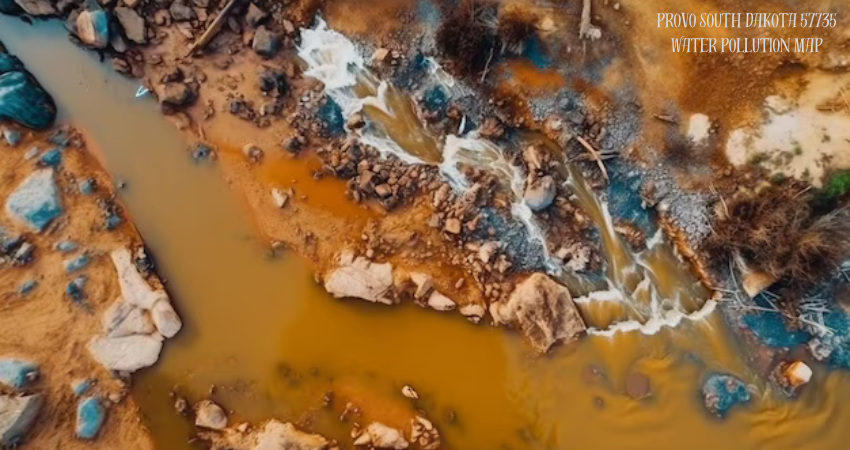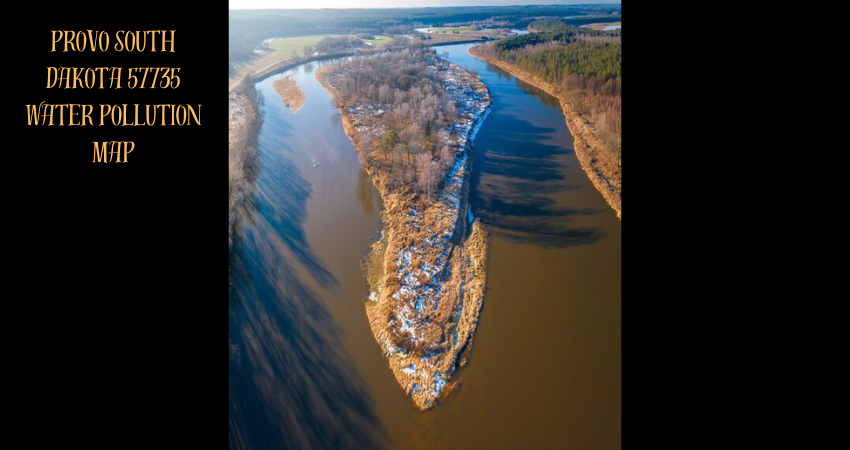Nestled in the quiet embrace of the provo south dakota 57735 water pollution map a story beneath its rivers and streams—a tale both haunting and hopeful, one carried in the gentle drift of water and soil. Within this story lies the whisper of water pollution, a shadow crossing over the purity of life’s most essential element, touching all who live in or drink from the landscape of the 57735 area. Here, we embark on a journey to understand the waters of Provo, South Dakota, through the lens of its pollution map, diving deep into the invisible layers beneath the surface to uncover what’s really happening with the water that feeds and sustains this community.
The Importance of Water in Provo’s Legacy
Before diving into the particulars of provo south dakota 57735 water pollution map we need to understand the emotional weight that water carries here. Water is more than just a resource; it is the lifeblood of Provo. It winds through every field, connects families, and has fueled this small community’s history. In Provo, to speak of water is to speak of life itself, and the pollution map tells a story that threatens this balance.
Unveiling the Water Pollution Map: A Window into 57735’s Health
Understanding the water pollution map of Provo in the 57735 ZIP code is like peeling back layers of an ancient mystery. Here’s what we know and what we’re beginning to uncover:
- Mapping the Threats: From industrial runoff to agricultural practices, various pollutants find their way into the waters of Provo.
- Contaminant Hotspots: Specific areas on the map shine as red, marking places where contamination is alarmingly high.
- The Flow of Pollutants: Watching the flow, we can see how pollution spreads, affecting wells, rivers, and the soil that blankets this landscape.

Understanding the Sources of Pollution
- Agricultural Runoff
The fertile lands of Provo, rich with farming heritage, sometimes seep with unseen toxins. Fertilizers, pesticides, and herbicides used in fields often find their way into local water bodies, carried by rain and irrigation. Although these fields bring life to Provo’s economy, they also thread silent poisons into the water, affecting more than just the crops. - Industrial and Mining Effluents
In a place where mining once fueled prosperity, the aftermath lingers. Mining activities have left traces of heavy metals—lead, arsenic, and mercury—in the groundwater, tarnishing the purity of an ancient resource. Provo’s rivers, once vessels of crystalline beauty, now carry the silent echoes of industry. - Household Waste and Chemicals
Everyday life brings its own contribution. Household detergents, cleaning agents, and improperly disposed medications find their way into the water table. Though each drop seems small, together, they form a hidden yet insistent stream that alters the chemical balance of Provo’s water.
The Risks to Human Health
Each droplet of contaminated water holds a threat, a shadowed promise of what could come:
- Immediate Health Risks: Skin irritations, gastrointestinal issues, and respiratory problems have been reported, particularly in children and the elderly.
- Long-term Consequences: Prolonged exposure to heavy metals and chemical contaminants can lead to chronic diseases such as cancer, liver damage, and neurological issues.
- Impact on Mental Health: Living in an environment where the water is feared and distrusted affects community morale. It takes a toll on families, knowing that something as necessary as water has become a silent foe.
Wildlife and the Web of Life Affected by Pollution
The rivers and streams of provo south dakota 57735 water pollution map, birds, fish, plants, and animals depend on these waters, each part of a delicate ecological web. As pollutants accumulate, they disrupt this natural balance:
- Fish Populations Decline: As contamination spreads, fish species sensitive to pollutants begin to die out, leaving behind empty waterways and impacting those who rely on fishing.
- Birds and Small Mammals Suffer: Birds and animals that drink from these waters or feed on contaminated fish suffer as well, bringing harm to the larger ecosystem.
- Plant Life Deteriorates: Pollutants alter the soil and water chemistry, affecting plants’ ability to thrive. Wildflowers once brightening the riversides with color now struggle against the chemicals in the soil.
Community Efforts to Reclaim Provo’s Waters
But all is not lost. The heart of Provo beats strong, and the people here are taking action:
- Local Conservation Initiatives
Small but fierce, local conservation groups have sprung up, working to protect and restore Provo’s waters. They push for stricter regulations and advocate for better waste management practices. - Educational Programs
Schools and community centers have launched programs to educate young people about the importance of clean water. The children of Provo are learning how to become stewards of their land and resources. - Environmental Clean-Up Drives
Volunteers gather by rivers and streams, clearing away visible waste and advocating for cleaner agricultural practices. These clean-up efforts, though small, bring visible changes to the landscape and inspire hope. - Water Testing and Awareness Programs
Residents are encouraged to test their water regularly and stay informed. By raising awareness of contaminants, community leaders hope to drive change from within, rallying for a safer water supply.
Technology and Innovation for Clean Water Solutions
Provo is embracing the future, turning to innovation to restore its waters:
- Advanced Filtration Systems: New filtration technologies allow families to filter out specific contaminants, providing them with cleaner, safer water.
- Phytoremediation Projects: The community is experimenting with plants known to absorb heavy metals from the soil, bringing nature into the fight to clean Provo’s groundwater.
- Renewable Agriculture Techniques: Farmers are starting to adopt eco-friendly, low-impact methods that reduce chemical use, aiming to prevent runoff before it ever begins.
A Shared Responsibility for Future Generations
In Provo, the water tells us that we are all connected. The pollution map reminds us that each choice, each chemical, and each moment of awareness ripples through generations. While the situation is serious, the people of 57735 have shown a resilience, a promise to care for the land they love, to nurture it back to health.

Conclusion
The provo south dakota 57735 water pollution map, in 57735 is a mosaic of challenges and resilience. In each stream, in every well, there is both a tale of harm and the hope of healing. Pollution may have marred this land, but it has also awakened a community’s resolve to reclaim its heritage. Together, with compassion, innovation, and unity, Provo stands a chance to rewrite its water’s story, transforming sorrow into renewal.
FAQs
What are the main sources of water pollution in Provo, South Dakota?
The primary sources include agricultural runoff, industrial waste from historical mining activities, and household chemicals improperly disposed of.
How does water pollution affect human health in Provo?
Polluted water can cause various health issues, including skin irritation, digestive disorders, and long-term risks like cancer and liver disease from prolonged exposure.
Are there any efforts to clean up Provo’s water supply?
Yes, local conservation groups, environmental clean-up drives, and educational programs have all taken steps to raise awareness and reduce pollution.
How can residents of Provo ensure their water is safe to drink?
Residents are encouraged to use home filtration systems, test their water regularly, and stay informed about local water quality reports.
What role does agriculture play in water pollution in 57735?
Agricultural practices contribute to pollution through chemical fertilizers, pesticides, and herbicides, which can seep into waterways and affect the ecosystem.


